Emergency planners hold Ripon sinkhole talks
- Published
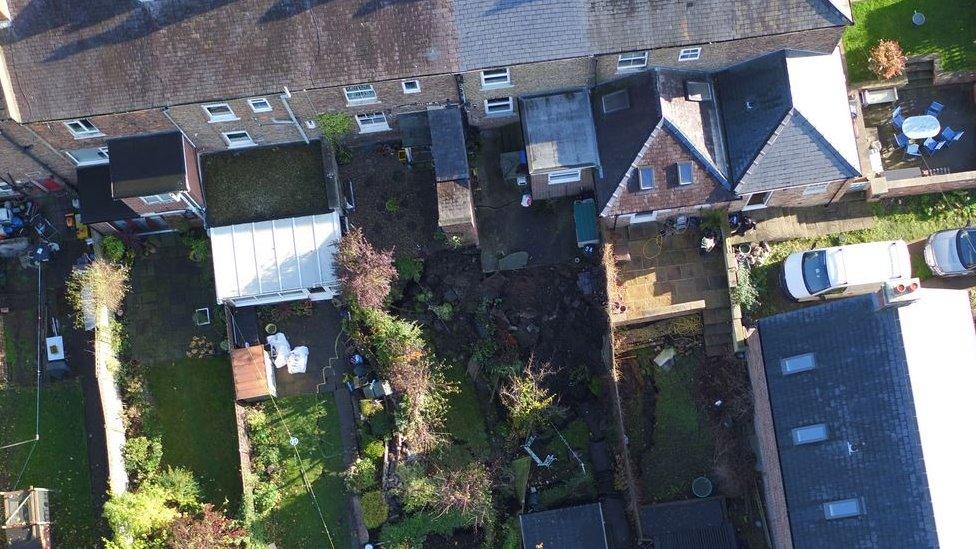
Residents from 12 houses were evacuated on Wednesday night
Emergency planners are discussing when residents can return home after a large sinkhole opened in North Yorkshire.
Twelve homes were evacuated on Wednesday after the hole opened in back gardens of Magdalen's Road in Ripon.
Ian Spiers, emergency planning manager for Harrogate Borough Council, said Yorkshire Water was deciding how to reopen sewers so residents could return home.
The sinkhole measures about 20m (66ft) by 10m (33ft). It is 9m (30ft) deep.
One resident described the ground moving and finding her garden steps had gone.

Back gardens fell into the sinkhole on Magdalen's Road when it opened at 22:30 GMT on Wednesday
No-one was injured but the properties were evacuated as a precaution and the sewerage system connected to several properties fell in to the ground.
Harrogate Borough Council officers met representatives from the fire service, North Yorkshire County Council highways department, Yorkshire Water and Northern Powergrid.
Teams from the utility services remain on site evaluating options for "temporary solutions" that might allow some residents to return home.
Mr Spiers said: "The little private road at the back of the properties isn't suitable for heavy vehicles, so Yorkshire Water is looking at alternative ways of getting to reopen the sewer so some of the residents can get back home."

What are sinkholes?
Sinkholes are often caused by surface water penetrating the ground, or fluctuations in groundwater levels.
An assessment by the British Geological Survey (BGS) on Friday determined the sinkhole remains a risk and there is the potential for further slippage around the hole.
The BGS said, external Ripon lies in one of the most susceptible areas of the UK for sinkholes because of "Permian gypsum deposits".
These can dissolve more quickly than surrounding limestone, leading to the enlargement of underground caves.
According to the BGS, the wider area of Ripon periodically encounters sinkholes and in the 1980s and 1990s a hole was appearing every two to three years.

Further cracks appeared on Friday and officers have visited a couple of times each day to watch for changes.
Mr Spiers said there were "signs of a couple more smaller tension fractures" and earth from the gardens had dropped into the hole over the weekend, but there had been "no major visual disturbance".
He added: "Water and gypsum don't mix well, but thankfully the heavy rain at the weekend didn't have any dramatic effect.
"At this stage, I don't think we can do anything to stabilise the site.
"BGS guidance is to monitor the hole while [we] decide the best way to stabilise the site."
A council spokesperson said: "Our main responsibility is to continue to protect the public from any danger. The area affected by the sinkhole has been cordoned off and a safety perimeter established to deter anyone from entering the area."
In 2014, a 100-year-old detached house in an adjoining street was demolished after a 25ft-wide (8m) sinkhole appeared.
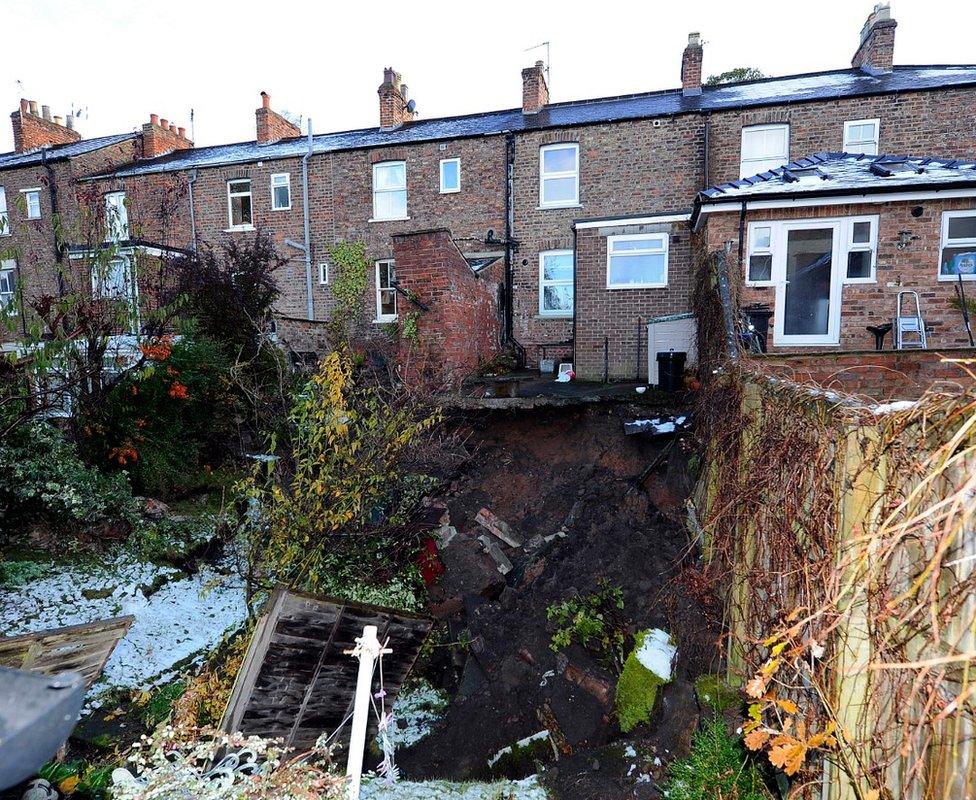
Evacuated residents moved in with friends and families or into alternative accommodation
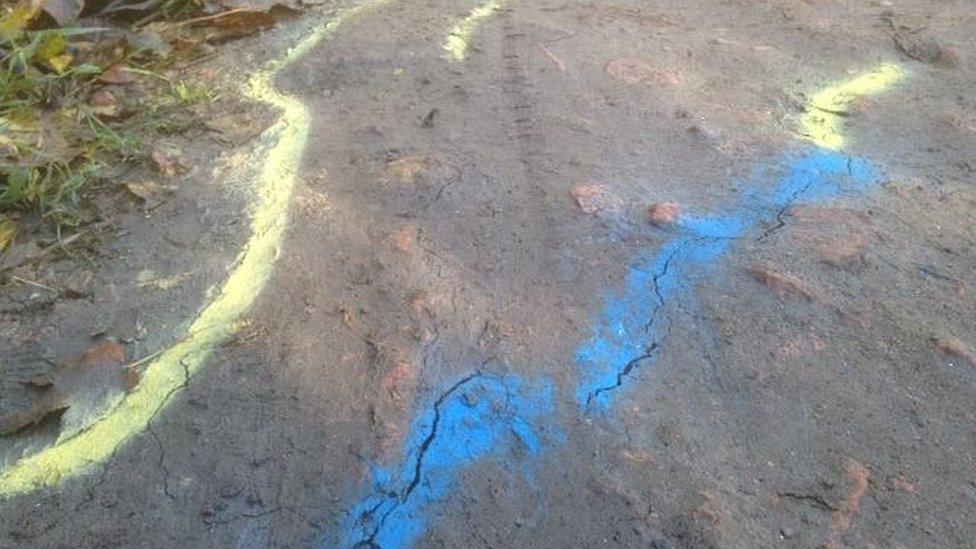
Surveyors are watching for new cracks in the ground and on walls
- Published12 November 2016
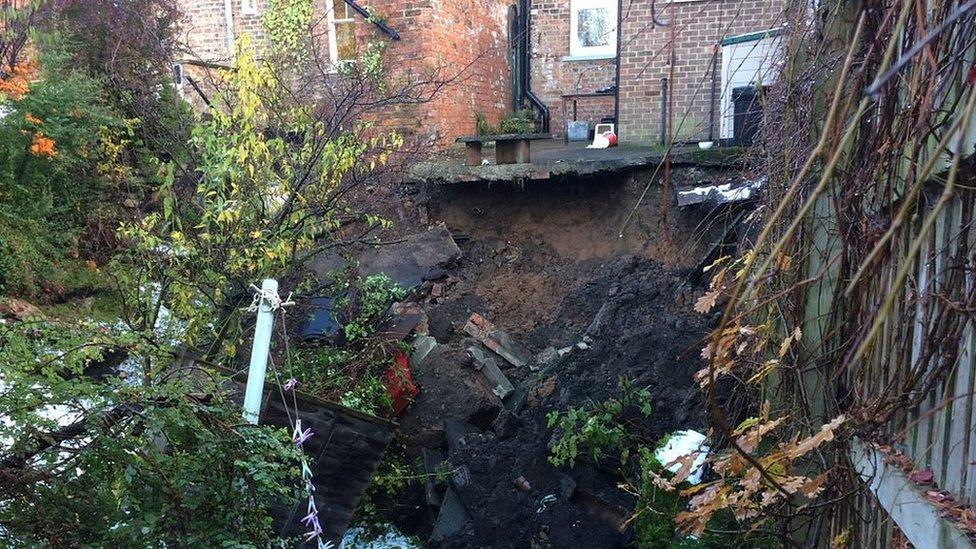
- Published11 November 2016

- Published10 November 2016

- Published5 March 2014
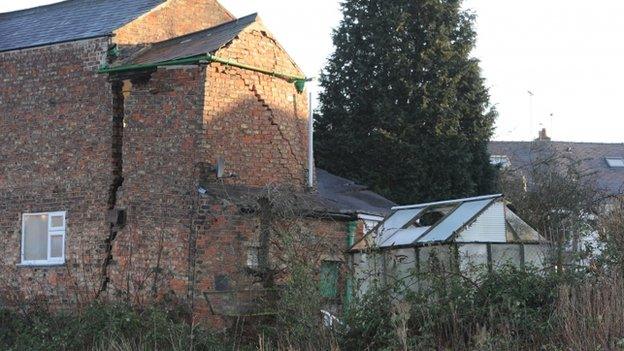
- Published18 February 2014

- Published18 February 2014